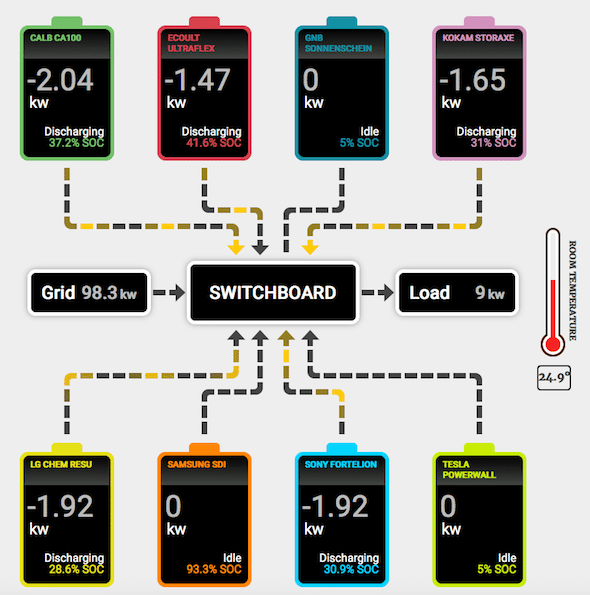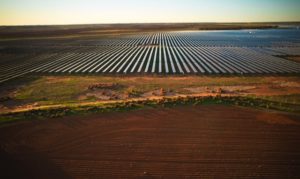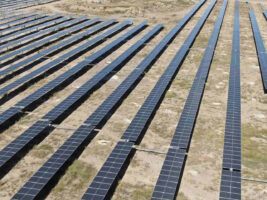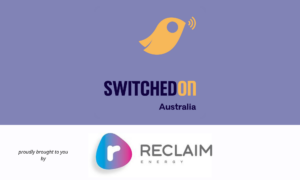An ARENA funded residential battery storage trial that will test eight of the sector’s leading lithium-ion technologies, including the 6.4kWh Tesla Powerwall, is underway in Canberra.

The three-year trial, which is being conducted by ITP Renewables, was officially launched by the ACT government, ARENA and ITP on Wednesday, on-site at the Canberra Institute of Technology’s Bruce Campus.
Over the course of the trial, lithium-ion battery chemistries and products will be tested and compared against claims made by manufacturers, under Australian conditions. Ongoing results of these tests will be displayed in real-time on a dedicated new website.

As well as the Powerwall, the batteries being tested include:
– the CALB CA100 – a 3.2V (320Wh) 100Ah cell by China Aviation Lithium Battery Company;
– the Ecoult UltraFlex – a 14.8kWh battery bank & BMS described as advanced lead-acid; Exide’s Sonnenschein Solar Block – a 6V (1.8kWh) deep-cycle VRLA gel battery that currently dominates the off-grid sector;
– the 8.3kWh Kokam StoraXe system – German smarts integrated with Kokam’s South Korea made li-ion cells;
– LG Chem’s RESU – a 6.4kWh li-ion battery with an added expansion pack, taking capacity to 9.6kWh for this test;
– the Samsung SDI AIO – an all-in-one PV and battery inverter, lithium-ion;
– the li-ion LFP Sony Fortelion, which claims “high power, high safety and long lifetime.”

As we reported here in May 2015, one of the main objectives of the project, which won $450,000 in funding from the Australian Renewable Energy Agency, is to measure the batteries’ decrease in storage capacity over time and their compatibility with a range of renewable generation technologies.
Ultimately, it is hoped that the findings of the trial will help energy system designers, suppliers and consumers make informed decisions about the best renewable energy battery storage system for their needs, as the Australian residential battery storage market takes off.
ACT’s minister for the environment Simon Corbell said the state-of-the-art facility would fill critical gaps in public knowledge of battery storage, at a critical time for the industry.
“By working with organisations like ITP and armed with the results of this unique research, we can support the confident adoption of new battery technologies,” Corbell said at the launch.
“This is an important step in the journey towards embedding distributed storage as an important part of a renewable energy powered grid.
“By sharing the results and data in real time, consumers will be presented with key information on the performance of household batteries, allowing them to make an informed decision when purchasing batteries.”
Corbell also reiterated the ACT’s commitment to supporting and growing the battery storage sector in both the Territory and in Australia, and driving world leading research into high-penetration renewables.
“The investment in energy storage will produce substantial cost savings associated with meeting peak demand and drive the development of new commercial opportunities and jobs in the region,” he said.
ARENA CEO Ivor Frischknecht told the launch gathering that while many Australians were hanging back waiting for battery storage prices to fall, this would not be the case for much longer, with costs predicted to fall by 60 per cent by 2020.
“The predicted rapid uptake of batteries promises to deliver real benefits, not just to consumers but also to our electricity networks … by reducing the intermittency of renewable energy – an issue that has sparked much recent debate around the performance of South Australian electricity system,” Frischknecht said.
“Over the next three years, the vital information produced by the centre will help Australians decide which battery to install in their homes and will also help power companies design and transition to innovative renewable energy projects and technology solutions.
“These could include things like micro-grids and Virtual Power Plants similar to the one I helped launch a little over a week ago in Adelaide,” he said.
“Whether you’re a family wanting to know which battery offers the best performance and value for money or an electricity retailer wanting to create new energy storage-based products for your customers, accurate data on how different batteries work will be invaluable.”










